The Settlers

| a game by | Blue Byte Software |
| Platform: | PC (1993) |
| User Rating: | 9.0/10 - 2 votes |
| Rate this game: | |
| See also: | Best RTS Games |
The settlers is another one of those constructive, God-type games which seem to be appearing with the regularity of radioactive fish in the Irish Sea. It also manages to "combine elements of' (in other words; blatantly copy) so many other similar games, that we've spent many a long hour playing Spot The Influence.
That's not to say it doesn't have a little niche of its own, both in the games world and in our hearts. Basically, it's another city-building game with bits of fighting and conquering (or Lebensraum-seeking, as I should perhaps call it in this context) lots of economic planning, bits of flower arranging and bits of voyeurism. (See pigs reproduce under the shadow of death! See cold-blooded breeders watch!) It could be said to be wide-ranging in scope. Everything and everyone is interdependent. Things produced by certain people will be utilised by others to make something else, certain things can only be built after a combination of events have taken place - you know the sort of thing.
You always start by erecting a central building - in this case, being Mediaeval times, it's a castle - where all the people and materials you own at the start of the game are stored. Before you build the castle, you should select the site with care. It's best to get a geologist's report on the underground potential of the site. You'll need iron, coal and gold in the ground if at all possible (but since you can only mine in the mountains, you'll need to be near them) and you'll ideally need to have some trees and water nearby too, for chopping down wood and catching fish. The idea is to expand your village, taking over the land of the opponents around you, while still maintaining a solid balance of provision and utilisation of goods within your own community.
Baddies
There are a number of computer opponents to choose from, ranging from the hippy, do-goody types to the absolute lunatics and there are also a number of ways to select exactly who you'll be playing against, so you can set the difficulty levels yourself. You can play up to three others at a time, or play a human opponent. The size of the world map on which you'll play can also be selected at the setup screen: the larger the map, the less chance there is that you'll have an aggressive neighbour waving his sword through your castle window right from the start.
It's a complex game but there are training lessons in the manual to take you through the basic principles. They show how to achieve certain objectives and ensure you have the materials to do so. This is an essential facility with a game of this degree of intricacy, but it's the one good thing in an otherwise poor manual.
Spot the influence
It's rather like Sim City because it has an emphasis on city planning, except that although your city expands in size, it doesn't develop through time - it's always rooted in Mediaeval times - and anything that becomes available to you (weapons, and so on) will always be of that time. Otherwise you'd soon have converted transit vans all over the place and it would be called The Crusties.
Road layouts are as important to you here as they are in Sim City, because your ransporters, the people whose full-time job it is to lug all the materials back and forth along them, can't get past if their way is blocked by six tons of Athena posters on their way to the knight's new bachelor pad. Thus, a well-planned spider's web-style network is essential. Unfortunately, you don't have the same devil-may-care, bulldozers-away facilities in your road-building that you do in Sim City. Trees, rocks and other areas of natural beauty cannot be demolished simply to make a link road to Do It All and, if you run out of wood, you have nothing to build with, so you have to plant trees as car well. Land can't be flattened either, so it's best to build meandering roads that are flat rather than straight ones that have t-in-3 slopes: deliveries take much longer on steep paths, slowing the town's expansion.
Don't think that just because it respects the rights of trees it's all nicey-greeny-environmentally-sweet, though. There's a bit of Powermonger in there, too - a Serb content, if you like. The idea is to put together armies, expand your territory and eventually wipe your neighbours off the face of the earth. Except you can only attack military buildings in this. The forerunner of the "precision attack", obviously.
And, of course, no game of this sort could fail to have elements of Civilisation in it, too: your little Settler folk are hard at it, producing tools and weapons and diffuser hairdryers and other items essential for survival in Mediaeval Europe. Except, unlike in Civilisation, you can't control their development. You can't ask Mediaeval scientist-types to aim their work in a certain direction in the hope that they'll invent the Ladyshave. A restricted imagination means they only build scythes and stuff (although I suppose they are the precursors to the Ladyshave).
You can tell the game's set in the past because every one of your little characters has a career ahead of him. Within the game there are construction workers, carpenters, bakers, millers, butchers, farmers, fishermen (but thankfully, no fishers of men), knights, forest rangers, lumberjacks, carpenters... the list goes on and on, but I can't find it to copy it out. Strangely, they all seem to be male, which raises questions about how they came into being in the first place. Maybe there's one woman who stays in the castle having sex and giving birth all the time. Who knows...
Engrossing or what?
The nice thing about the game is that you can actually sit back and see all this stuff happening. Usually in games of this type, you're told in the manual that a certain development or event leads to another and that this chain of events leads to something else. Sometimes it's true, sometimes it smacks of programmer bullshit, but usually it's so far under the surface of the game that you can never tell which. With The Settlers, you know it's true because you can see it all happen in front of your eyes - and listen to it happen as well.
Say, for example, you want to start producing bread. You can watch the farmer sowing seeds, see the wheat grow and watch him harvest it. The sacks of wheat go off to the miller, the windmill starts turning and soon the flour appears in sacks outside. These are delivered to the bakery. A face appears in the window, smoke starts pouring from the chimney and soon there's piping hot bread waiting to be delivered outside the bakery.
While this is going on, you might also be keeping an eye on the construction of a building, ordering some knights to go and attack a neighbour's outpost and defending one of your own. You'll see and hear trees being cut down, people hitting each other over the head and construction workers shouting abuse at any women who walk past your pc.
It all looks very nice, too. You can play it in normal-viewing mode, which is better for planning the routes of roads and other intricate fiddling about, or in svga mode, which allows a lot more of your vast territories to be seen at once, but also reduces the icons to a size that makes you want to get the anti-static screen cleaner out. Luckily, you can switch between the two at the click of an icon. Whichever way you view it, though, you're guaranteed to have plenty to see and do and the option for freeform games or set missions, means you'll come back to it again and again.
The Manual (A Lengthy Moan)
For a start, it's all idiosyncratlcally translated from the original German and is littered with stuff like: "This chapter, consecrated to the training scenarios, is now finished". It's also written in a rambling fashion, without a reference section and assumes that everyone behaves in an orderly fashion when purchasing a game, plodding from the start of the manual, through every tutorial in the book, to the end, regardless of how tedious it is or how badly it's been written. There's a contents section, but that doesn't really help when some of the information crops up in another tutorial.
As an example, it breaks off in the middle of telling you how to produce food to discuss something as essential to your success in the game as the road layout. It's almost as if the manual suffers from a short attention span - it's like talking to a senile relative or having a chat with an MTV fan. The section isn't highlighted in any way and, if you were looking for it quickly, you'd never find it. Like most of the information, it's all buried in a mound of text. The game is based around the construction of different types of buildings: a bakery, a butcher's shop, an ironmonger's and so on. The differences between their depiction in the game could fairly be said to be 'subtle'. Yet nowhere in the manual is there a chart showing each building with its name underneath, so you can quickly and easily remind yourself of the difference between, say, a forest ranger's hut and a lumberjack's hut. It's quite important to know, because one plants trees to replenish your stock and the other chops them down for building materials.
Likewise, nowhere is there any kind of flowchart or diagrammatic table showing what you need to achieve certain objectives (like producing meat to feed your miners). It won't stop your enjoyment of the game once you know what you're doing but it certainly impedes the learning process and, it's a shame really, because the game is so engrossing.
There are icon-based charts in the game itself that are supposed to aid you with all this, but they're very small and are still basically meaningless without consulting the manual where, again, you'll have to search for it.
The Chain
The beauty of the game is that everything depends on everything else. It's a fully-functioning society and it can be a bit bewildering at first. To expand your territory (say, to make room for a farm) you need to construct buildings for knights to inhabit near your borders. Once they're installed, the boundaries go back. But you need gold to pay your knights (an astute reflection of the motivation of the average knight), which might come from the castle coffers, but may eventually have to come from gold mines. You need an iron mine to provide iron ore for weapons. You need a coal mine to top up the coal to give to the blacksmith to use in the forge to make weapons for the knights, scythes for the farmers and sharp throwing-knives for the pig breeders. This is beginning to sound like a warped version of Paddy McGinty's Goat.
To mine gold, iron or coal, you need to have a territory that includes some mountainous regions. Miners won't work if they're hungry, so you need farms, pig breeders and fishermen. The most direct way to provide food is to fish for it, but the supply of fish isn't inexhaustible. That's why you need a farm. Farmers grow wheat (this is before it was more profitable to grow nothing and claim huge subsidies), some of which goes to the miller in the windmill, then to the baker to make bread; some of it goes to the pig breeder to feed their pigs, who frolic in the fields, unaware of the fate that awaits them or their master's strange collection of pointy objects.
The knight's building requires wood and stone. A lumberjack provides the tree parts, a sawmill turns them into planks, a construction worker builds the framework. Assuming you have a supply of stone, the building will soon be complete - otherwise you need a quarryman's hut (which, thankfully, isn't made of stone).
Download The Settlers

System requirements:
- PC compatible
- Operating systems: Windows 10/Windows 8/Windows 7/2000/Vista/WinXP

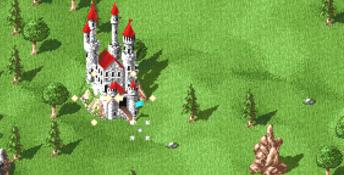

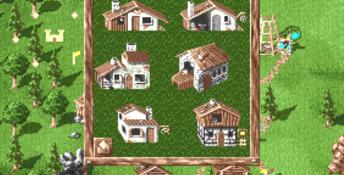
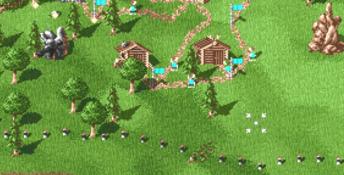
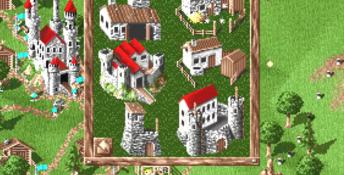

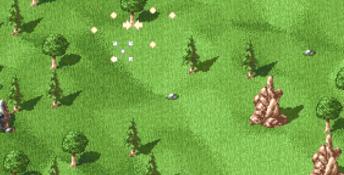

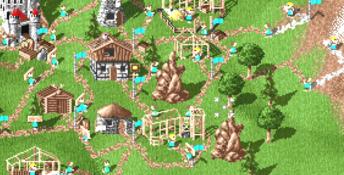
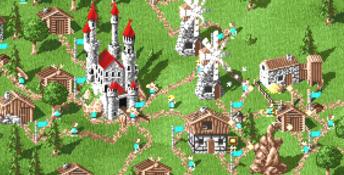
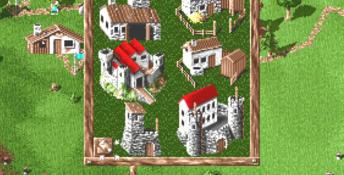
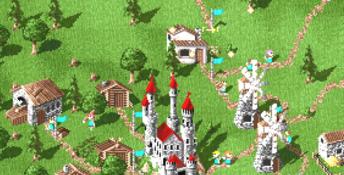
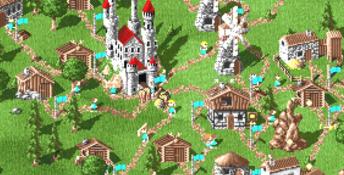
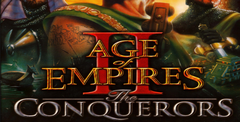 Age of Empires II: The Conquerors
Age of Empires II: The Conquerors
 Ground Control
Ground Control
 Knights and Merchants
Knights and Merchants
 The Settlers IV
The Settlers IV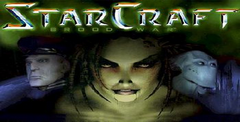 Starcraft: Brood War
Starcraft: Brood War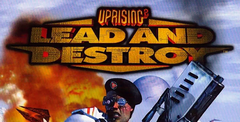 Uprising 2: Lead And Destroy
Uprising 2: Lead And Destroy